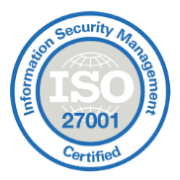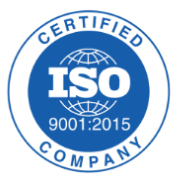Do you want to avoid traditional training programs that fail to engross your apprentices and give real outcomes? Then, look no further than Learning Management Systems, the solution that has taken the education and corporate worlds to the next level.
LMS offers a one-stop shop for regulating your industry’s training processes and educational content. But with technology growing at full speed, it’s significant to continue with the newest trends and ingenuities in LMS integrations.
That’s why we’ve made the ultimate guide to LMS integrations for 2023. Whether you’re an educator or a corporate trainer, we’ll explore the latest technologies and tools to take your LMS system to the next level.
What is LMS Integration?
Explore the world of Learning Management Systems (LMS), which has transformed education and corporate training by creating online training programs and materials more accessible and organized. Integrating your LMS with other tools in your tech stack can provide several benefits, such as innovative security policies, access to third-party content and materials, and increased flexibility for learners to access training materials from anywhere, on any system. These unique benefits of LMS integration can help organizations create a more dynamic and flexible training program that fulfills the objectives of their learners and keeps up with evolving technology trends.
Transforming Workplace Learning: A Closer Look at How LMS Integrations Perform
When structuring LMS integration, it’s significant to remember the following three primary attributes at each step of the process:
Functionality:
The integration should be structured to fulfil specific functional needs, such as data transference, user management, materials delivery, and real-time reporting. The integration should be constructed to combine with the LMS flawlessly and offer an effortless experience for customers.
Security:
The integration should be safely planned, including data security, user endorsement, and access control. Safety measures should be in place to prohibit unofficial access, data violation, and other possible security threats.
Scalability:
The integration should be structured with scalability in priority to confirm that it can manage a cumulative volume of customers and data over time. It involves making the integration flexible, extensible, and smoothly upgradable as the latest LMS assets and competencies are added over time.
When it is about how LMS integrations work from a technical standpoint, it’s helpful to acquaint yourself with the following three terms:
APIs (Application Programming Interfaces):
APIs are a set of protocols and software for designing software systems. They enable different software applications to interact with each other and transfer data. For example, LMS integration uses APIs to allow data to transfer between the LMS and other apps, such as HR or CRM.
Single sign-on (SSO):
SSO is a mechanism that enables individuals to verify once and access several systems without the necessity for numerous logins. An LMS integration may utilize SSO to allow individuals to flawlessly access the LMS from other devices, such as an HR portal or a corporate network.
SCORM:
SCORM (Sharable Content Object Reference Model) is a set of technical canons for educational course content. SCORM confirms that educational content can be delivered across apps and forums, including other LMSs.
By learning these technical languages, you can quickly identify the competencies and limitations of LMS incorporations and work more efficiently with technical teams to improve and regulate integrations between different apps.
Stimulate Your Learning Business with These five essential LMS Integrations.
Learning Management System (LMS) integrations are vital for organizations considering providing dynamic and efficient training programs to their workers. Integrating your LMS with other platforms and software can advance the user experience, boost engagement, and deliver data and acumens that can support your analysis of the success of your training initiatives. Here are five tools that are vital for LMS integrations in your learning industry:
Single Sign-On (SSO) authentication tool:
SSO authentication enables individuals to access various devices with a single set of login IDs. It is specifically beneficial in LMS integrations as it eradicates the need for users to recall several usernames and passcodes for different applications. It also makes it informal for managers to control user access and authorizations across other platforms.
Video conferencing software:
Video conferencing software such as Zoom or Microsoft Teams can be cast off to operate live online training programs or webinars. Integrating your LMS with video conferencing software can help you to deliver a more communicative and appealing learning experience for your learners.
CRM:
Paradiso LMS platforms provide the integration of customer relationship management software and virtual training systems. Using this incorporation, you can design personalized virtual training events for your sales and customer service teams based on specific skills and overall business needs. Moreover, using an LMS with CRM can improve interaction with prospects and potential customers and automate particular approaches. An example of this automation is the automated delivery of virtual training endorsements or documentation paths to employees facing low conversion rates.
eCommerce:
eCommerce LMS integrations are significant if you intend to monetize your virtual training course content. These integrations offer inclusive assets, including sales and conversion reports and payment processing, that help you raise profits and establish your brand. Some industries even determine to provide more innovative educational materials to customers, such as certification eLearning courses that allow potential consumers to become brand activists and develop relevant skills, resulting in additional revenue. Popular eCommerce LMS integrations include PayPal, Shopify, and Stripe.
social media:
Integrating social media into your LMS can offer several advantages, ranging from virtual training material delivery to participation in discussion forums. Assimilating social media can also help you to monitor informal eLearning activities, provide unique possibilities for peer feedback and support, and integrate wikis and online articles to improve the learning experience. Moreover, you can involve apprentices through online polls, live chats, and social media groups, thereby marketing a more collaborative and comprehensive approach to L&D.
Lastly, integrating your LMS with these vital tools can support you in providing a more appealing and dynamic training experience for your workers.
Final Thoughts:
When selecting a Learning Management System (LMS) for your association, ensuring it can perform well with all the other tools that your association prefers is significant. To accomplish this, it’s suggested to discover an LMS with connections with your powerful tools. One such LMS is Paradiso LMS, which provides many pre-built integrations for various tools, including association management, CRM, event management, membership or community forums, webinar podiums, program development tools, and advertising tools Google Analytics, and eCommerce software.
Moreover, Paradiso LMS has its own in-built course authoring tools that can substitute the requirement for further integrations. It can simplify your software and make it effortless for everyone to prefer. By choosing an LMS with pre-built unifications and built-in software, you can confirm that your software performs flawlessly and proficiently.


















